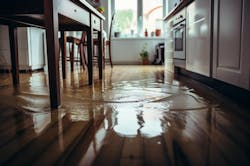"Going Bare" and What it Says About Affordability
I live in a great area of Dallas.
Eleven years ago, my husband and I paid cash for a 1929 duplex, and if we had to buy again today, there’s no way we could afford this neighborhood.
We’re lucky that we invested here, and even luckier that the rental income from the other unit covers our taxes and insurance. Until now, that is.
In 2023, our homeowners insurance premiums went up by 90%. We both have excellent credit and have never filed a claim. I thought it was a typo. Now here it is time to renew again and the cheapest quote we found is another 24% higher.
We’re not alone. Insurance costs have gone up 6% to 23% nationwide depending on your source. The primary reason is that we’re seeing more frequent, and severe, damaging weather events. (I poked around that rabbit hole and don’t believe the data fully backs up the narrative, especially in non-coastal areas, but that’s a different rant.)
The upshot is that we are seriously considering canceling our insurance and using the money to set up a rainy-day fund, or in the case of Texas, a hailing-day fund. The idea feels sacrilegious. We could lose everything. Yet the alternative—paying $5,600 a year—goes equally against our grain.
What we don’t know is whether these individuals will feel the same kind of sticker shock as my husband and I, as we decide whether to pay the insurance or just add extra fire extinguishers and get the kitchen reface we both covet.
More Homeowners "Go Bare"
We’re not alone here either. According to the Insurance Information Institute and global insurer Munich Re, 12% of US homeowners did not have home insurance in 2023. That seems surprisingly high. What’s less surprising is that nearly half of this group reported annual household incomes of less than $40,000. When you’re already struggling to get by, paying for a product you don’t think you’ll use drops to the bottom of the list.
What about the other half? That’s more than 5 million consumers. A recent Wall Street Journal article mentioned the owner of a Florida vacation home whose insurance policy shot up from $7,000 per year to $17,000. He calculated the cost of replacing his house, and everything in it, to be about $1.5 million, and rather than pay the exorbitant premium, he “went bare.” This means he opted out of home insurance entirely. According to the report, the man set aside enough money to rebuild his house if needed and invested those funds.
Most remodeling clients lie somewhere between a household getting by on less than $40,000 per year and an individual who’s able to keep $1.5 million handy “just in case.” These in-between folks are the ones who can affect the market.
We know that remodeling has profited from high mortgage rates as more people choose to stay put and renovate rather than pay today’s interest. What we don’t know is whether these individuals will feel the same kind of sticker shock as my husband and I, as we decide whether to pay the insurance or just add extra fire extinguishers and get the kitchen reface we both covet. Like many homeowners, it’s not that we can’t afford both, it’s that we don’t want to have to.
To see another, but equally important side of the insurance market, read this piece about a recent roofing lawsuit.

